Unmanned aerial vehicles Lavochkin
Unmanned combat aircraft in the OKB-301 began to engage in the early 1950-s. For example, in 1950 — 1951, a remote-controlled C-C-6000 projectile was developed with a flight weight of 6000 kg, designed to destroy strategic targets in the rear of the enemy with a powerful in-depth defense system. According to specialists at the Design Bureau, the C-6000 could deliver warheads weighing 2500 kg up to 1500 km at speeds of 1100 — 1500 km / h at 15 000 m. by radar sighting of the projectile and the target, i.e. over the radio beam. The possibility of missile guidance using a television system or a thermal homing head (GOS) was not excluded.
Around the same time, the design bureau developed a draft unmanned single-engine bomber. According to the plan of its creators, the bomber was to deliver a bomb weighing 2500 kg to the target and return home. At the same time, its flight-technical data should not have been inferior to fighters.
Since we are talking about bombers, I note that in the spring of 1950, Lavochkin proposed to develop a bomber carrying a TRM Mikulin 3000 kgf, a radar sight and a crew of 2 — 3 people. In addition to the 1500-kg bombs, defensive armaments were provided from three 23-mm cannons that protected the front and rear hemispheres.
Six years later, in accordance with the March decree of the Council of Ministers of the USSR, the development of supersonic high-altitude bomber No. 301 began at OKB-325. At the end of 1957, a draft was approved. According to the task, a single-seater with a supersonic ramjet would deliver a bomb load weighing 2300 kg to a distance of 4000 km at a speed of up to 3000 km / h at an altitude of 18 - 20 km.
Eight months later, the task was corrected by raising the ceiling of the car to 23 000 — 25 000. At the same time, it was prescribed to install VK-15 on the TRDF machine. Development continued until the middle of the year 1958, and there were proposals to create an unmanned bomber and reconnaissance aircraft.
But these proposals, like previous projects, have remained on paper because of the heavy workload of the enterprise with rocket-related topics. Nevertheless, they laid the necessary foundation for the creation of promising unmanned aerial vehicles.
"Storm" over the planet
At the start of the 1950, airplanes were the only means of delivering atomic bombs. The first ballistic missiles, created on the basis of the German V-2 and adopted by the armies of the United States and the USSR, had a range and a carrying capacity insufficient to deliver heavy nuclear weapons to intercontinental distances. Suffice it to say that the Soviet P-2 had a range of 600 km and lifted the load to 1500 kg. An alternative means of delivering nuclear warheads in those years was considered to be a projectile or, in modern terminology, a cruise missile with high supersonic flight speed at intercontinental distances.
Pace of development aviation and missile technology in the postwar years were very high, and it is not surprising that in July 1948 a number of TsAGI employees, including A.D. Nadiradze and Academician S.A. Khristianovich, as well as M.V. Keldysh and engine designer M.M. Bondaryuk, after completing the research work, they concluded that it was possible to create a projectile with a flight range of 6000 km at a speed of 3000-4000 km / h. In this case, the weight of the explosive in the warhead reached 3000 kg. At first glance, this might have seemed fantastic. After all, flying at the speed of sound in those years surprised mankind, and here - a threefold excess. But the conclusions reached were months of painstaking work, a huge number of calculations and experimental studies. On this occasion, Minister of Aviation Industry M.V. Khrunichev reported to Stalin:
“The main prerequisites for the creation of an aircraft-projectile is the developed scheme of a new type of supersonic air-jet engine“ SVRD ”/ supersonic ramjet engine. - Note. auth.), which has considerable economy at supersonic speeds, as well as the use of a new type of wings and projectile contours ... "
At about the same time, at the Scientific Research Institute-88 (now TsNII-Mash) on the initiative of B.Ye. Chertok began research on astronavigation systems, without which the defeat of even area targets was problematic.
But from assessments to the practical implementation of the idea of an intercontinental cruise missile, the path has run for more than five years. The first to design such a machine started in OKB-1 (now RSC Energia), headed by SP. Korolev after the release of the February 1953 year government decree. According to a government document, it was required to build a cruise missile with a range of 8000 km.
The development of an experimental cruise missile (ERS) with a supersonic ramjet engine, the prototype of a future combat vehicle, was asked by the same document. To reduce the time of its creation as an acceleration, the first stage was supposed to use a ballistic missile P-11.
The second, marching stage - and this was, strictly speaking, an ECR with a frontal air intake and an unregulated central body - was calculated under the engine of M. Bondaryuk. The march stage was made according to the classical aircraft scheme, but with a cruciform tail. To simplify the flight control system, the ERS flight was assumed at a constant altitude and a fixed speed. After shutting down the ramjet from a temporary device, the rocket had to be transferred to a dive or plan to the target.
The draft ERS project was approved by the SP. Queen 31 January 1954, and began preparations for its manufacture. However, in the midst of work on it, on the basis of a resolution of the Council of Ministers of the USSR dated 20 in May 1954, the development of a long-range cruise missile was transferred to the MAP. In accordance with the same document, in ASB-301, A.S. Budnik, I.N. Moishaev, I.M. Lisovich and other specialists. In accordance with the same document in OKB-23 under the direction of V.M. Myasishchev was developed MKR "Buran".
One of the most important tasks facing the creators of the Bury and Buran ICR was the development of a supersonic ramjet engine and control system. If the main flight characteristics of the rocket depended on the power plant, then the control system was not only the accuracy of hitting the target, but the very question of reaching the territory of the likely enemy. Not less difficult was the choice of construction materials. With a long flight at a speed of three times the sound, aerodynamic heating did not allow the use in the heat-stressed aggregates of the well-developed “winged” alloy of duralumin, which was well mastered by industry. Steel structures, although they withstood the high temperature, retaining their mechanical properties, but turned out to be heavy. So the developers came to the need to use titanium alloys. About the amazing properties of this metal was known for a long time, but the high cost and complexity of machining restrained its use in aviation and rocket technology.
OKB-301 was the first in the Soviet Union to develop and master in production both the technology of welding titanium and its machining. The correct combination of aluminum, steel and titanium alloys made it possible to create a high-tech MKR with the necessary weight response.
The outline of the Storm was completed in 1955 year. However, a year later, 11 February, the government demanded to install on the product a more powerful and heavy warhead weighing 2350 kg (originally planned to weigh 2100 kg). This circumstance has delayed the submission of the 350 product for flight tests. Increased and the starting weight of the MCR. In the final version, the customer approved the draft design for the Storm in July 1956.
The “Storm” scheme, as well as the Myasishchevsky “Buran”, can be qualified in different ways. From the standpoint of rocket technology, this is a three-stage machine, made according to the package scheme. Its first, or accelerating, stage consisted of two blocks with four-chamber LRE, first С2.1100, and then С2.1150, with a starting weight of about 68 400 kgf each. The second (March) stage was a cruise missile. The third stage is a drop-shaped container with a nuclear warhead detached from a cruise missile.
From the standpoint of aircraft builders, this was a vertically taking off projectile with launching accelerators. The marching stage of the classical scheme had a middle wing with a small lengthening by swept 70 degrees along the front and straight rear edges, composed of symmetrical profiles, and a cruciform tail unit.
The fuselage MKR was a body of rotation with a frontal air intake and unregulated central body. Marching supersonic direct-flow air-jet RD-012 (RD-012U) and the air intake connected the air duct, between the walls of which and the skin housed fuel (except for the instrument compartment in the central fuselage). It is curious that not traditional kerosene, but diesel winter fuel was used to operate the supersonic ramjet. In the central body of the air intake device was a warhead.
The “Buriya” cruise missile was launched vertically from a carriage installer and, in accordance with a predetermined program, passed an accelerating section of the trajectory on which the rocket was controlled by gas rudders, and after they were dropped by means of aerodynamic surfaces. Accelerators were dropped after the supersonic ramjet launched into the maximum thrust mode, which depended on both speed and flight altitude. For example, on cruising flight mode and at an altitude of 16 — 18 km, the calculated thrust of the RD-012 was 12 500 kgf, and on 25 km - 4500 — 5000 kgf. The flight of the second stage, according to the original intentions of the designers, was to take place at a speed of 3000 km / h and with a constant aerodynamic quality with the adjustment of the trajectory using an astronavigation system. The cruise began at an altitude of 18 km, and as the fuel burned out, the ceiling in the final segment of the trajectory reached 26 500 m. In the target area, the rocket was switched to a dive at the height of 7000 — 8000 m its warhead separated.
Flight tests of the Storm began on July 31 of the year 1957 at the Groshevo training ground of the 6 of the State Air Force Research Institute, not far from the Vladimirovka railway station. The first launch of the MCR took only 1 September, but unsuccessful. The rocket did not have time to depart from the start, as there was a premature discharge of gas rudders. The uncontrollable Storm fell after a few seconds and exploded. The first experimental product was sent to the February 28 test site of the year. The first launch took place on 1958 March, with the results considered satisfactory. Only 19 of May of the following year earned a supersonic ramjet with a sustainer stage with the separation of the accelerator. And again three not very successful starts ...
On the ninth launch of 28 December 1958, the flight duration exceeded five minutes. In the next two launches, the flight range was 1350 km at speeds of 3300 km / h and 1760 km at speeds of 3500 km / h. Not a single atmospheric aircraft in the Soviet Union moved so far and so fast. The twelfth rocket was equipped with an astro-orientation system, but its launch was unsuccessful. On the next machine, we installed accelerators with a LRE C2.1150 and a supersonic ramjet with a shortened combustion chamber - RD-012U. Flight without astrocorrection lasted about ten minutes.
For missiles tested in 1960, the starting weight was about 95 tons, and the marching stage was 33 tons. Made MKR at the plants number 301 in Khimki near Moscow and number 18 in Kuibyshev. Accelerators were built at the factory number 207.
In parallel with the tests of “Storm”, launch positions were prepared for her on the Novaya Zemlya archipelago, combat units were formed. But it was all in vain. Despite the deadlines set by the government, the creation of both the MKP was greatly delayed. First out of the race was Myasishchevsky Buran, followed by the Storm. By this time, the strategic missile forces received the world's first intercontinental ballistic missile R-7, capable of overcoming any air defense system. In addition, the developed anti-aircraft missiles and advanced fighter-interceptors could become a serious obstacle in the path of the MKR.
Already in 1958, it became clear that MKR is not a competitor to ballistic missiles, and OKB-301 proposed to create an unmanned photo reconnaissance camera with the return and landing near the launch position, as well as radio-controlled targets on the basis of the Storm. The launch of the rocket, which took place on December 2 1959, was successful. After the flight under the astrocorrection program, the rocket was turned 210 degrees, switching to radio command control, while its range reached 4000 km. The February 1960 of the year government decree on the cessation of work on the "Storm" MKP allowed five more launches to work out the version of the photo surveyor.
In July, 1960, a draft government decree was prepared on the development of a strategic radio-technical and photo-intelligence system on the basis of the Storm. At the same time, the cruise missile (so called unmanned aircraft) was called for to be equipped with an automatic control system, equipment for astorientation in daytime conditions, PAFA-K and AFA-41 aerial cameras, and Romb-4 radio equipment. In addition, the scout was instructed to equip the landing device, allowing its multiple use.
The unmanned reconnaissance aircraft had to solve tasks assigned to him at a distance of 4000 — 4500 km and fly at a speed of 3500 — 4000 km at altitudes from 24 to 26 km.
In addition, it was supposed to work out a single-use version of the machine (without return) with a range of up to 12 LLC — 14 OOO km with continuous transmission of data from television and radio intelligence to a distance of 9000 km.
The project of a similar reconnaissance aircraft P-100 "Petrel" was proposed by OKB-49, headed by G.M. Beriev. In fairness, we note that in the second half of 1950-x, the OKB-156, headed by A.N. Tupolev. But the MKR D project, capable of flying a distance of 9500 km at a speed of 2500 — 2700 km / h and at an altitude of 25 km, shared the fate of Buran, Buri and Burevestnik. They all remained on paper.
From the fifteenth to the eighteenth, launches were conducted along the Vladimirov-ka highway - Kamchatka Peninsula. Three start-ups took place in February - March 1960 of the year, and one more, already for working out the "Storm" in the version of the target designed for the Dal air defense system (work on the photo reconnaissance stopped in October) - December 16 of 1960. In the last two flights, the range was brought to 6500 km.
A question was also considered about the use of the gyro-inertial flight control system Mars in the “Bure”, but it never came to its realization in the metal.
In parallel with the “Storm” in the OKB-301 in the second half of the 1950-s a cruise nuclear missile “KAR” with a nuclear ramjet engine was worked out, and in accordance with the March 1956 of the year government decree the bomber “with a special WFD” in unmanned and manned versions . The aircraft under this project was supposed to fly at a speed of 3000 km / h at altitudes from 23 to 25 km and deliver nuclear weapons weighing 4000 kg to targets at a distance of about 2300 km.
Even more fantastic is the proposal to develop an experimental unmanned hypersonic rocket plane capable of flying at altitudes of 45 — 50 km with a speed of 5000 — 6000 km / h. Its development began at the end of 1950-x and declared the beginning of flight tests in the fourth quarter of 1960.
At the end of 1940 in the United States, North America began the development of the Navaho supersonic intercontinental cruise missile (Navaho), but it never entered service. From the very beginning, she was pursued by failure. In the first flight, which took place on 6 in November of 1956, the control system failed, and the rocket had to be destroyed, in the second an abnormal operation of the accelerators was revealed, and in the third and fourth - difficulties with launching the SPDSD. Less than a year later, the program was closed. The remaining missiles were used for other purposes. More successful was the fifth launch, held in August 1957 of the year. The last start of the Navajo took place in November 1958. MKR "The Tempest" repeated the path traversed by the Americans. Both cars did not come out of the experimental stage: there was too much new and unknown in them.
Air target
In 1950, Commander-in-Chief of the Air Force Marshal K.A. Vershinin turned to SA Lavochkin with a proposal to build a radio-controlled target for training pilots, and 10 June issued a government decree on the development of the product "201", the future of La-17. Particular attention during the creation of the product "201" was paid to reducing its cost, because the "life" of the machine was assumed to be short-term - only one flight. This determined the choice of ramjet RD-800 (diameter 800 mm), working on gasoline. They even refused from the fuel pump, making the fuel supply pressure using an air pressure accumulator. The tail and wing (based on economics) were made straight, with the latter recruited from the CP-11-12 profiles. The most expensive purchased products, apparently, were radio control equipment, which was powered by a wind-electric motor installed in the forward fuselage, and autopilot.
In case of re-use of the target, a parachute-rescue rescue system was provided, and special dampers for a soft landing.
In accordance with the assignment of the Air Force, the Tu-2 aircraft was assigned as a carrier with the target placed on its back. However, such a launch of the 201 product was considered unsafe, and in December 1951, at the request of LII, began the development of a target suspension device under the wing of a Tu-4 bomber for the second engine nacelle. This “aero-coupling”, which provided a more reliable separation, was intended only for the first experimental launches, but later became regular.
Flight tests of the 201 product began on 13 on May 1953 of the year at the 6 test site of the Air Force Research Institute. By that time, two targets were already suspended under the consoles of the modified Tu-4. They were dumped at altitudes 8000 — 8500 meters at the carrier speed corresponding to the number M = 0,42, after which the ramjet RD-900 (modified RD-800) was launched. As is known, the ramjet thrust rod depends on the speed and altitude of the flight. For example, with a dry weight of 320 kg, the calculated thrust of the RD-900 at speeds of 240 m / s and heights of 8000 and 5000 meters was 425 and 625 kgf, respectively. This engine had a resource of about 40 minutes. Given that the duration of his work in one flight was about 20 minutes, then the target could be used twice.
Looking ahead, we note that it was not possible to achieve reliable operation of the parachute-jet rescue system. But the idea of re-using the target did not fade away, and it was decided to plant it from planning to the engine below the fuselage.
To do this, before landing, the target was transferred to large angles of attack, reduced speed, and parachuted. Flight tests confirmed this possibility, only with this the engine nacelle was deformed and the replacement of the ramjet engine was required. During the factory tests, difficulties arose in launching a ramjet at low air temperatures, and it had to be refined.
In addition to the radio command and control system, there was an autopilot on board the target. Initially it was AP-53, and in state trials it was AP-60.
Immediately after separation from the carrier, the target was transferred to a gentle dive to increase the speed to 800 — 850 km / h. Let me remind you that the thrust of the ramjet engine is related to the speed of the oncoming flow. The higher it is, the greater the thrust. At an altitude of about 7000, the target was taken out of the dive and sent to the test site by radio commands from the ground control station.
During the state tests, which ended in the fall of 1954, the maximum speed of 905 km / h and the practical ceiling - 9750 meters were obtained. The 415 kg fuel for the unmanned aircraft was only enough for 8,5 minutes of flight, while the RD-900 was reliably launched at altitudes 4300 — 9300 meters. Contrary to expectations, the preparation of the target for departure was extremely laborious. This required 27 specialists with average qualifications who trained La-17 for 24 hours.
In its conclusion, the customer recommended increasing the time of motor flight to 15 — 17 minutes, increasing the radar reflectivity and installing tracers on wing consoles. The latter was necessary for the training of pilots of fighter-interceptors with guided missiles K-5.
Serial production of the product “201”, which received the designation La-17 after it was put into service, was launched at plant No. 47 in Orenburg, and the first production vehicles left the assembly shop in 1956 year. For La-17 launches in Kazan, six Tu-4 bombers were finalized.
The target, apparently, turned out to be successful, but it had one major drawback - the need for a Tu-4 carrier plane, the operation of which cost a lot of money, and the “straight flow” consumed quite a lot of gasoline. Appetite, as we know, comes with eating. The military wanted to expand the range of tasks solved by the target. So gradually came to the thought of replacing the ramjet turbojet engine.
At the end of the 1958 of the year for training combat crews ZRK at the suggestion of A.G. Chelnokova worked on the 203 version of the machine with a short-term TRD RD-9BK (modification of RD-9B that were removed from MiG-19 fighters) with 2600 kgf and a pair of solid-fuel accelerators PRD-98 and ground launch. The maximum speed 900 km / h, altitude 17 — 18 km and the duration of the flight 60 minutes were set. The new target was located on a four-wheeled gun carriage 100-mm anti-aircraft gun KS-19. TRD extended the range of flight altitudes to 16 km.
Flight tests of the upgraded target began in the 1956 year, and two years later the first products began to leave the workshops of the plant in Orenburg. In May, 1960-th joint state tests began, in the same year, the target under the designation La-17M was adopted, and it was produced before the 1964 year.
It is known that when objects moving towards them approach each other, their relative velocity is added up and can turn out to be supersonic. Moreover, changing the angles of meeting objects, their angles, you can increase or decrease the relative speed. This technique was used as a basis for training combat crews when firing on La-17M, thereby expanding the capabilities of the target. And the long duration of its flight made it possible to imitate targets from a cruise missile to a heavy bomber.
For example, the installation of corner reflectors (Luniber's lenses) allowed changing the effective dispersion surface (EPR) and “creating” targets on radar screens that simulate front and strategic bombers.
In 1962, in accordance with the government’s November 1961 resolution, La-17 was once again modernized. The industry was tasked with: expanding the range of target heights from 3 — 16 km to 0,5 — 18 km, changing the reflectivity of the target in the 3-cm wavelength range to simulate, in particular, the FKR-1 cruise missile, as well as Il-28 aircraft and Tu-Xnumx. For this, a high-altitude engine RD-16BKR was installed, and in the tail part of the fuselage was a Lüiberg lens with a diameter of 9 mm. The range of ground tracking of the P-300 radar increased from 30 — 150 km to 180 — 400 km. The nomenclature of simulated aircraft has expanded.
To reduce the loss of non-crashed vehicles upon landing, we modified its landing gear. Now, at the minimum calculated height, the load connected by a cable with a check was ejected from the rear part of the fuselage, when the autopilot pulled the target at a high angle of attack. Parachuting, the target landed on skis with shock absorbers placed under the TRD gondola. State tests of the target took three months and ended in December 1963 of the year. The following year, the target under the designation La-17MM (product "202") was launched into mass production.
But on this story radio-controlled targets la-xnumx is not over. Stocks of RD-17 engines were quickly exhausted, and in 9-ies there was a proposal to replace them with Р1970К-11, converted from Р300ФЗС-11, installed on MiG-300, Su-21 and Yak-15 aircraft. By this time, the company named S.A. Lavochkin, fully transferred to the space theme, and it was supposed to transfer the order to the Orenburg production association Strela. But due to the low qualifications of the employees of the serial design bureau in 28, the development of the last modification was entrusted to the Kazan OKB Sports Aviation "Sokol".
The upgrade, which seemed outwardly simple, was dragged out to 1978, and the target under the designation La-17K was mass-produced until the middle of 1993.
By the middle of the 1970-s, there were still quite a few La-17M in the landfills, although they were considered obsolete, but were used for their intended purpose. The reliability of the telecontrol system left much to be desired, and often the radio equipment refused. In 1974, I witnessed when a target launched at the Akhtubin-sky range, standing in a circle, refused to obey the ground-based operator and, being blown away by the wind, moved to the city. One could only guess about the consequences of its soaring flight after generating fuel, and the MiG-21MF was raised to intercept the "rebel" target with an experimental Wolf Scope. Four “blanks”, as armor-piercing shells commonly used from a distance of 800 m are commonly known, turned out to be enough for La-17M to turn into a pile of shapeless debris.
The latest modifications of the La-17K targets are still used during various exercises and training exercises for air defense weapons.
Targets La-17 could also be found at training grounds in friendly countries. For example, in the 1950s, quite a few La-17 with ramjet engines were delivered to the People's Republic of China, and at the end of the 1960-s, the Chinese aviation industry mastered their production at their plants, but with a WP-6 turbojet engine from a Q-5 aircraft (a copy of the Soviet MiG -19C). The target is launched using the starting solid-fuel boosters, and the rescue - using the parachute system. Tests of the target, which received the designation CK-1, ended in 1966, and in March of the following year it was put into service.
In May, the 1982-th began testing the CK-1 B target with a low-altitude flight profile, and the following year, the development of the CK-1 C began with increased maneuverability, intended for firing at it with guided missiles. The latter required the creation of a new management system. But the “biography” of the machine did not end there; an unmanned reconnaissance aircraft was created at its base.
Tactical reconnaissance La 17P
In accordance with the June 1956 of the year, the Decree of the OKB-301 government was instructed to develop and submit a 1957-FR photo reconnaissance camera with the same RD-201 engine for testing by July 900. The AFA-BAF-40Р aerial camera was placed in the forward part of the fuselage on the rocking installation, providing for the possibility of replacing it with a more modern AFA-BAF / 2К. Now they removed the unnecessary corner reflectors hiding under the radio transparent fairings of the wing tips and the fuselage, replacing the latter with metal ones.
The estimated range of the reconnaissance aircraft, designed for flying at altitudes up to 7000 m, exceeded 170 km, which, in clear weather, made it possible to look not only at the positions of the advanced troops, but also at its close rear points. The turn radius was within 5,4 — 8,5 km at a heel angle of about 40 degrees and an angular velocity of 1,6 — 2,6 radians per second. Planning range from a height of 7000 m reached 56 km.
Target La-17M was still being tested, and in November 1960 of the year at its base in accordance with the November 1960 of the year, the Decree of the Council of Ministers of the USSR OKB-301 was assigned to develop the next front-line reconnaissance (product 204) of multiple use with autonomous control and TRD RD-9BK 1900 kgf. The aircraft was designed to conduct daily photo and radar reconnaissance of the front line to a depth of 250 km. This work was headed by the chief designer MM. Pashinin. Calculations showed that, while maintaining the geometry of the La-17, the reconnaissance aircraft with a starting weight of 2170 kg will be able to fly at a speed of 900 — 950 km / h for one hour.
The composition of the reconnaissance equipment, in addition to the previously installed cameras, placed low-altitude AFA-BAF-21. The autopilot was replaced by AP-63. For convenience, when transporting a scout wing console made folding. The transport and commissioning installation of the T-32-45-58 on the chassis of the ZIL-134K was given the designation SATR-1. The reconnaissance launch was carried out with the help of two solid propellant launch accelerators PRD-98, and the rescue was carried out on a parachute with a landing on the engine nacelle.
The joint tests of the customer and the industry, which ended at the end of July 1963 of the year, showed that the vehicle was capable of carrying out photointelligence at a distance of 50 — 60 km from the starting position, flying at altitudes up to 900 m, and up to 200 km - at an altitude of 7000 m. was within 680 — 885 km / h.
As follows from the act on the results of state tests, La-17P fully complied with the government decree and the tactical-technical requirements of the Ministry of Defense, with the exception of multiple use. It was allowed to conduct daily tactical photo reconnaissance from a height of 3 — 4 km, as well as large-size and area targets from a height of 7000 m.
In 1963, the serial plant number 475 produced 20 reconnaissance La 17P. In this form, the car in 1964-m was adopted by the Air Force under the designation TBR-1 (tactical unmanned reconnaissance), and it was operated until the beginning of the 1970-s.
Initially, the specialists of individual aviation squadrons of unmanned reconnaissance aircraft (UAEb) were trained in the 10 research unit of the UAV (deployed near the city of Madona, Latvian SSR) of the 4 th center for combat use and retraining of flight crews (Lipetsk) and in the 6 research center Army Aviation Center (Torzhok, Kalinin region). There was also the 81-ia UAF Air Force.
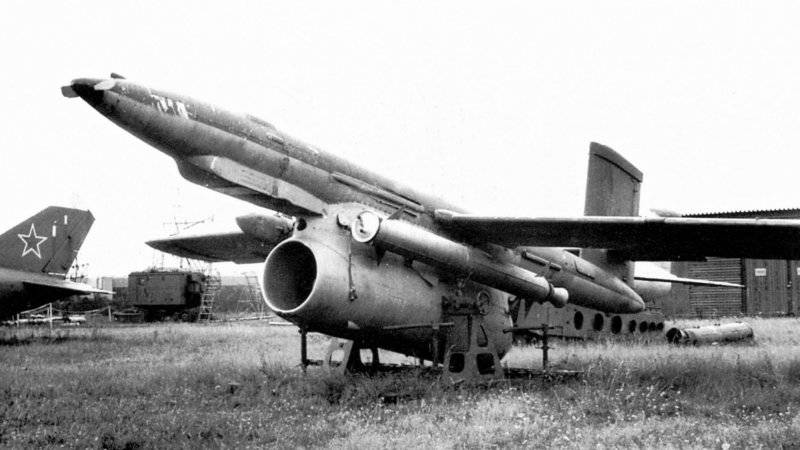
In this form, the La-17P was demonstrated at the exhibition of aviation equipment in Moscow at Khodynka field
Under the designation UR-1, intelligence officers were shipped to Syria, but the cases of their use in combat are unknown. Subsequently developed a modernized version of the La-17PM (product "204").
Targets and reconnaissance family La-17 became the latest aircraft, bearing the name of a talented engineer, designer and organizer of the aviation industry Semen Alekseevich Lavochkin.
The latest modifications of the La-17K targets are still used during various exercises and training exercises for air defense weapons.
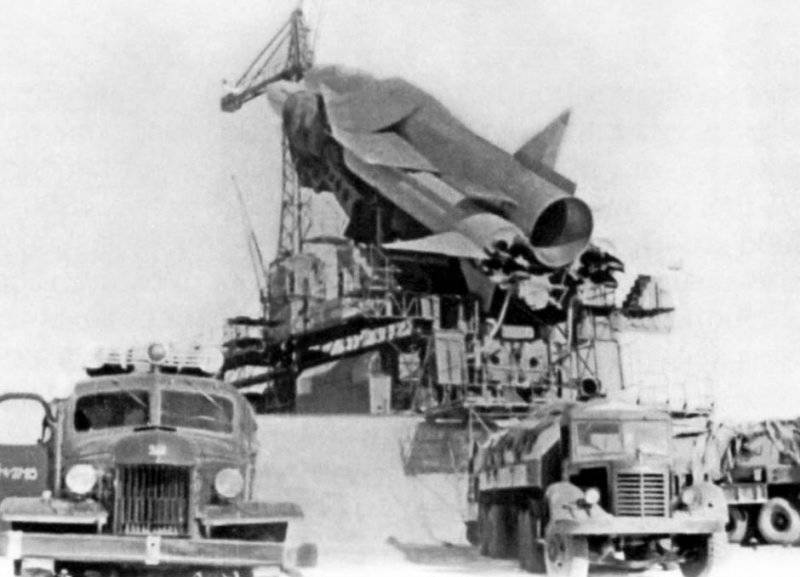

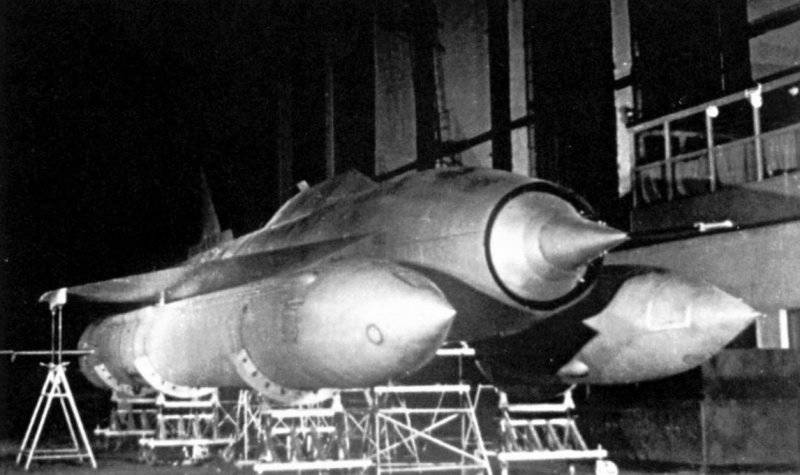
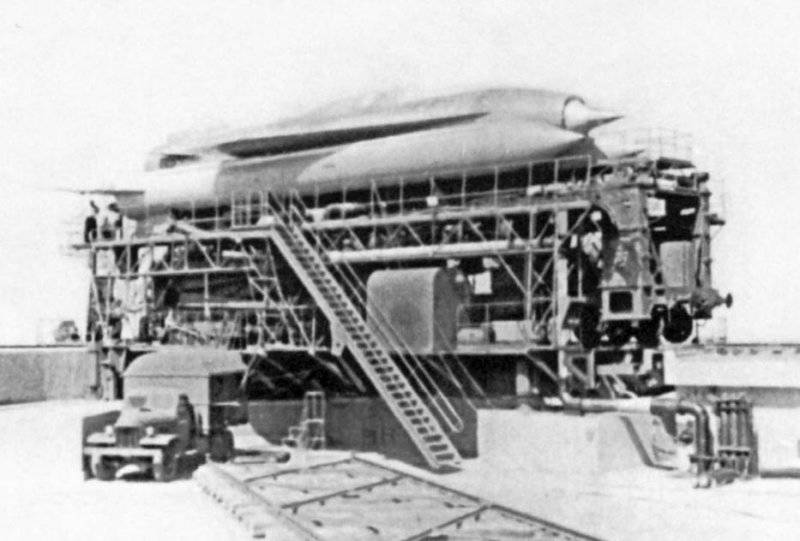

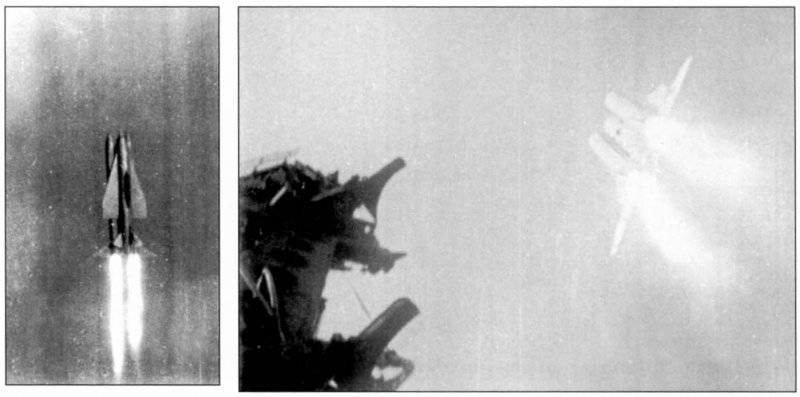
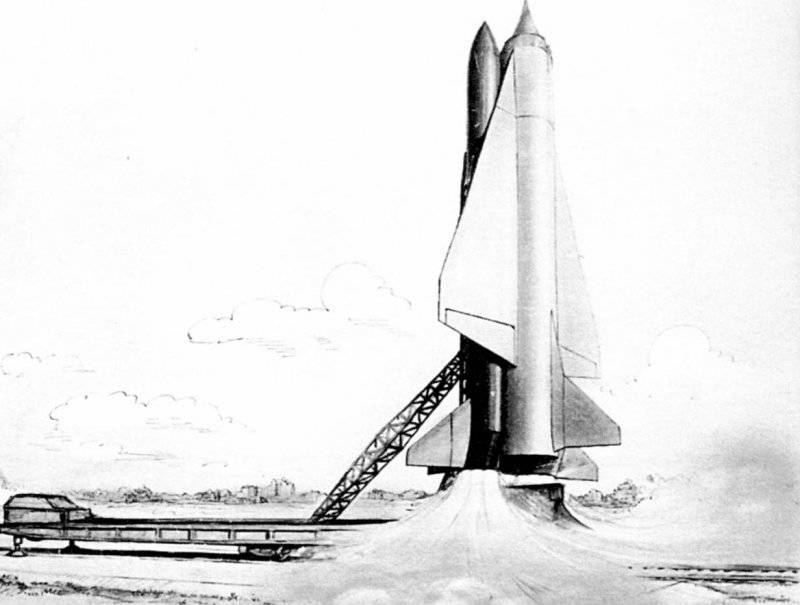
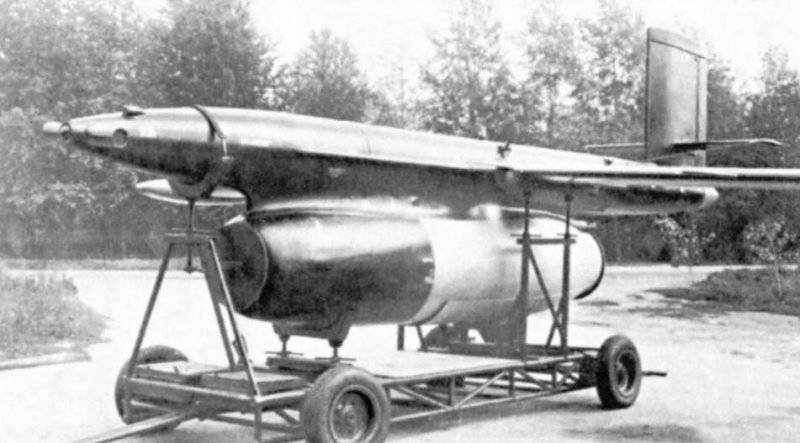
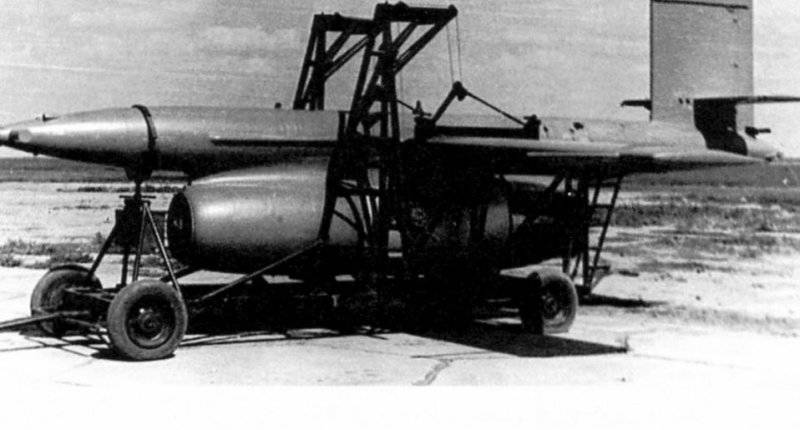
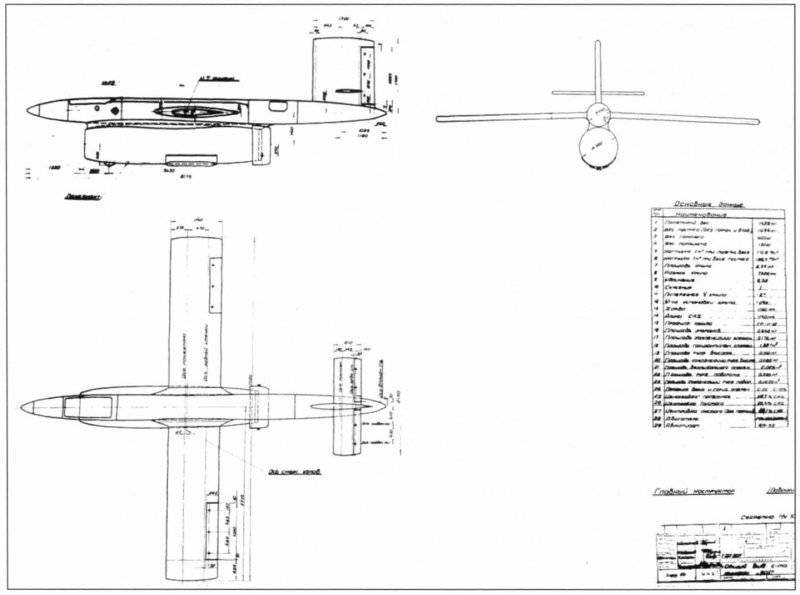

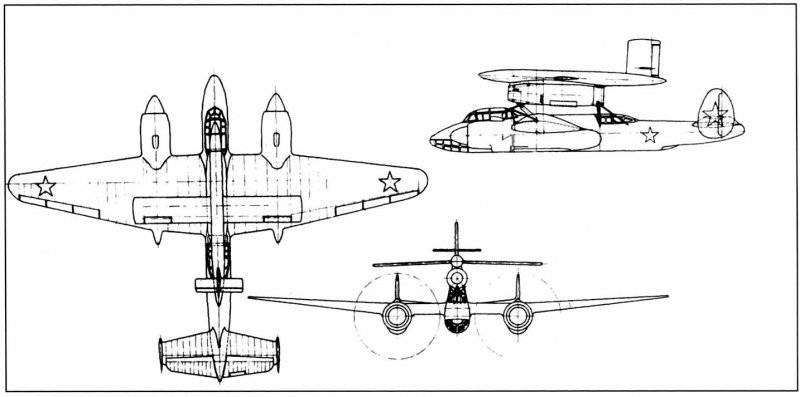
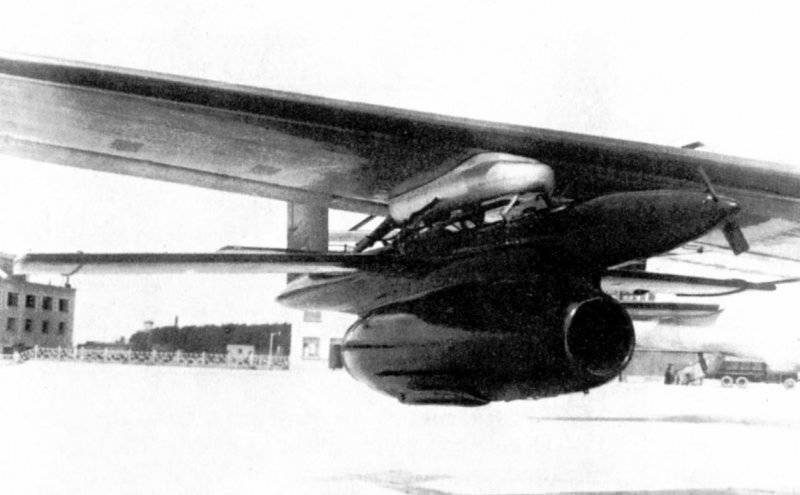
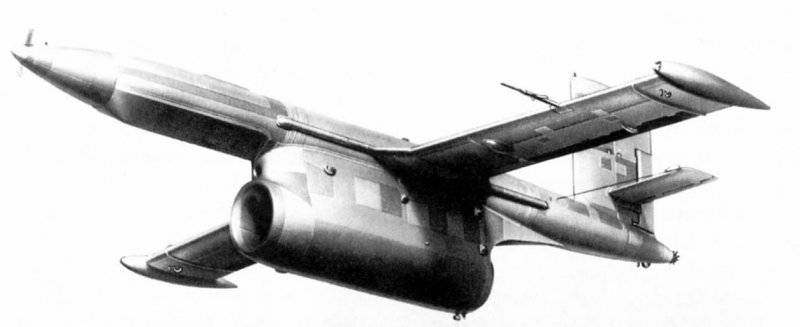
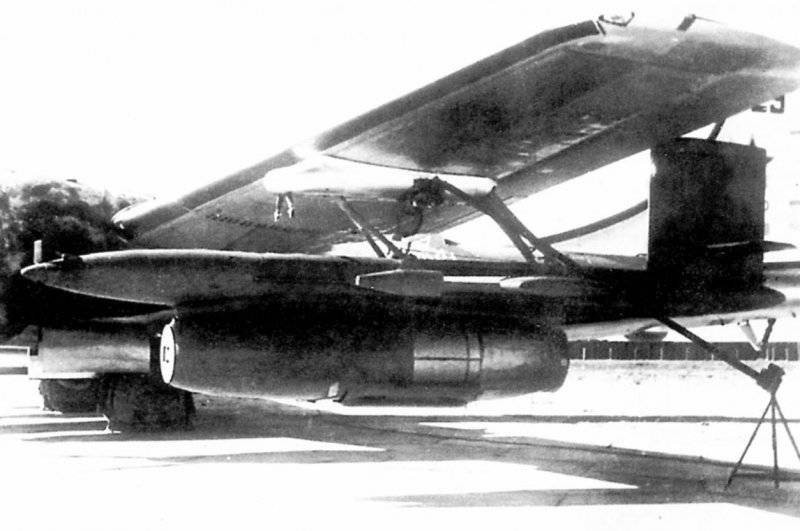
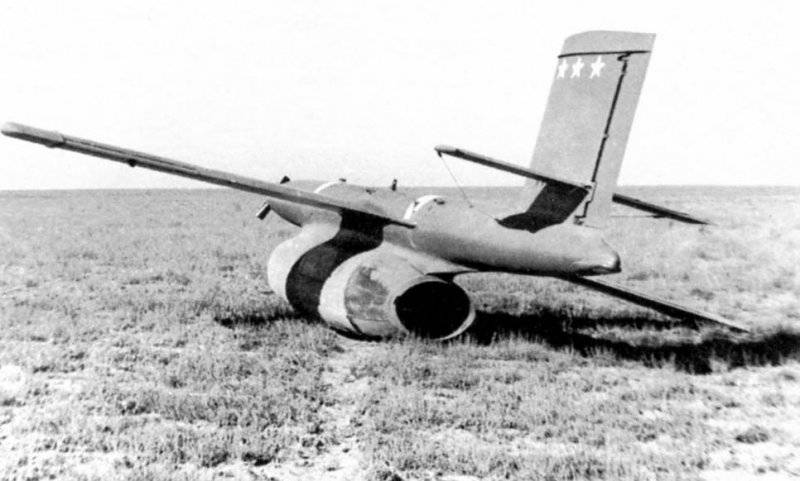
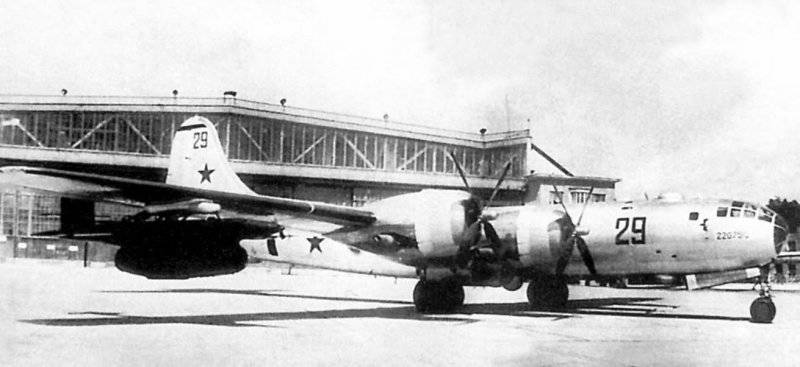
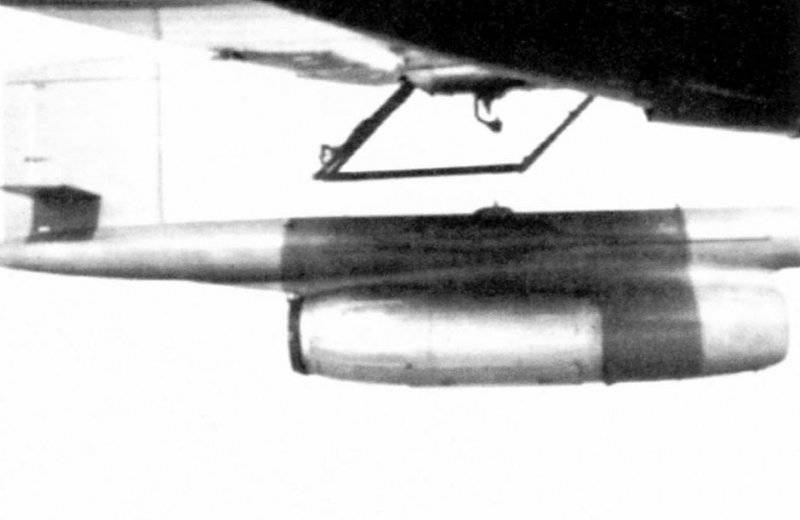
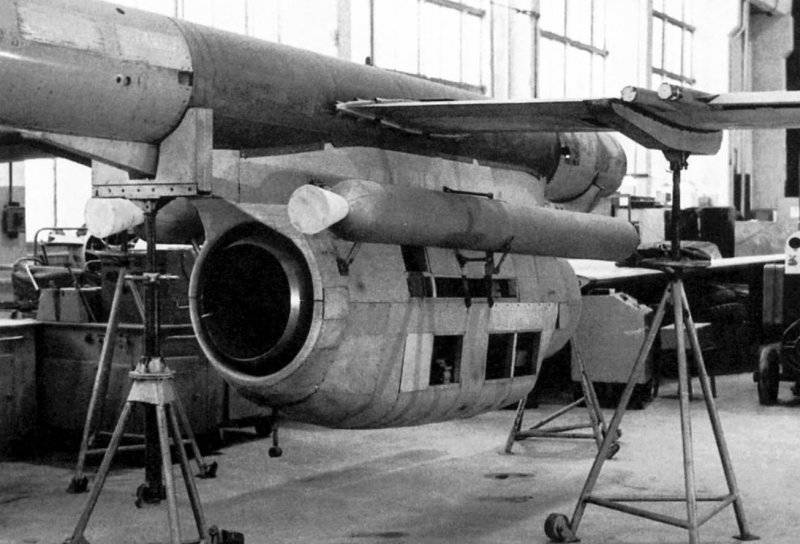
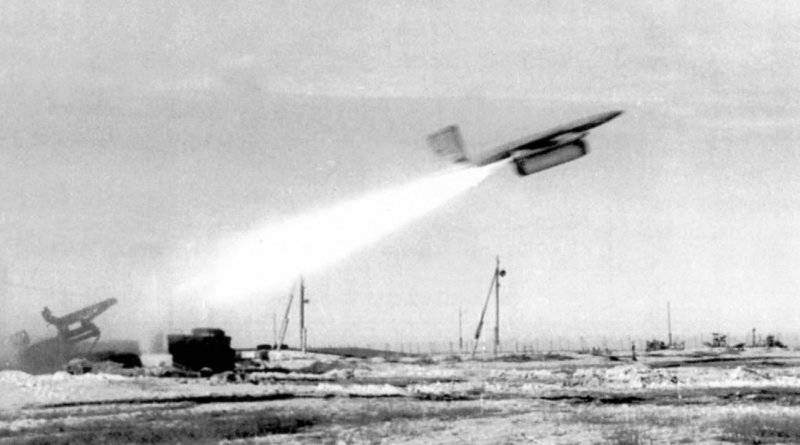
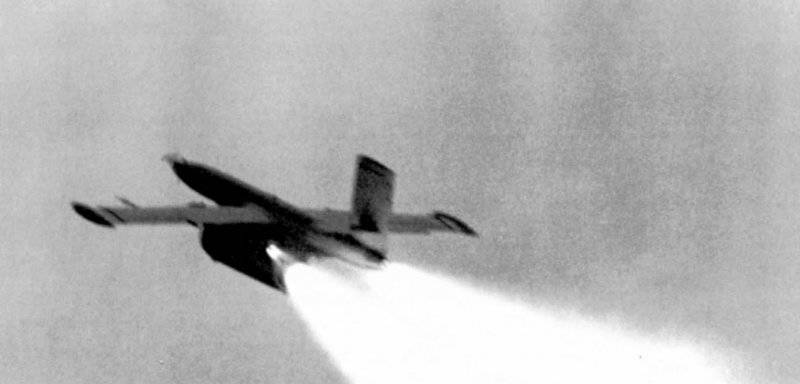
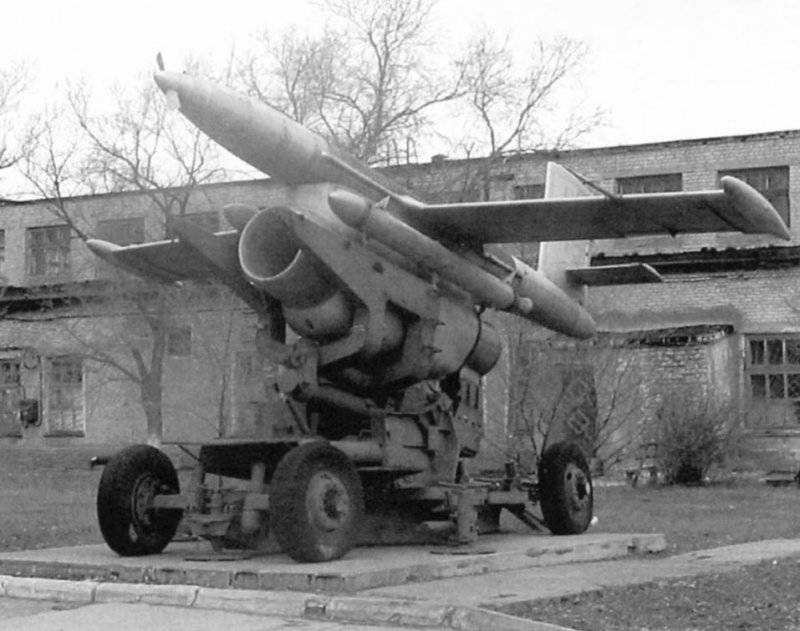
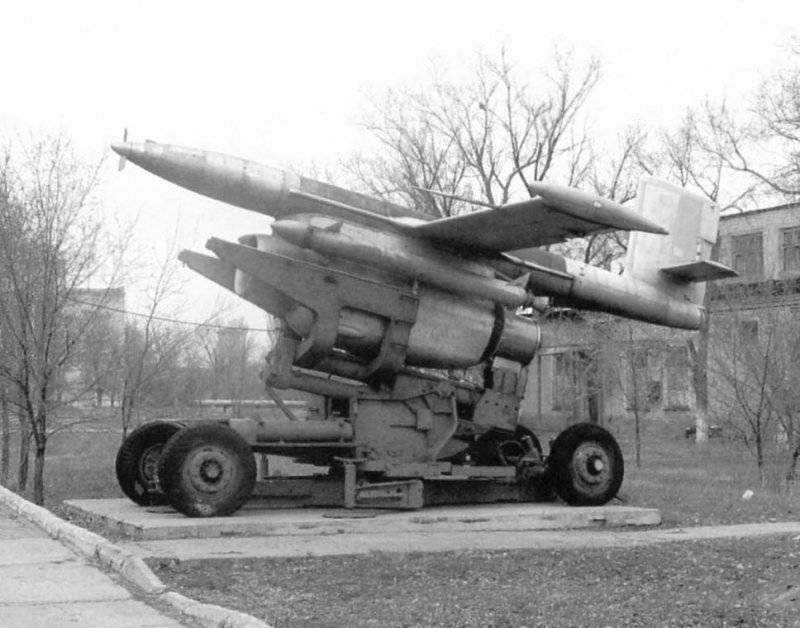
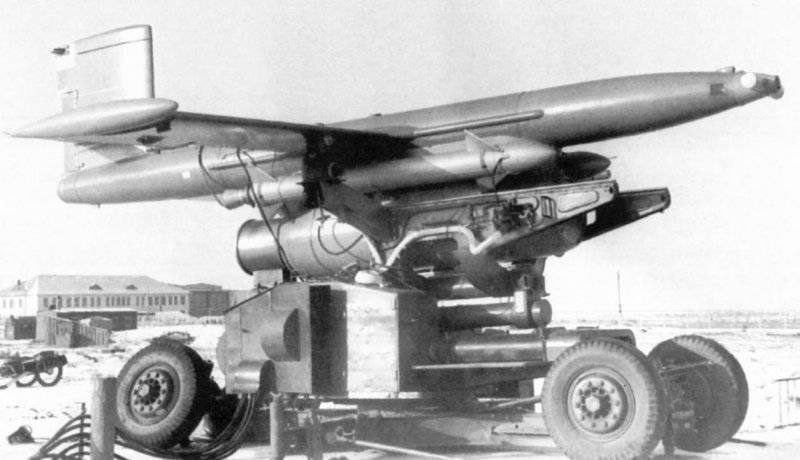
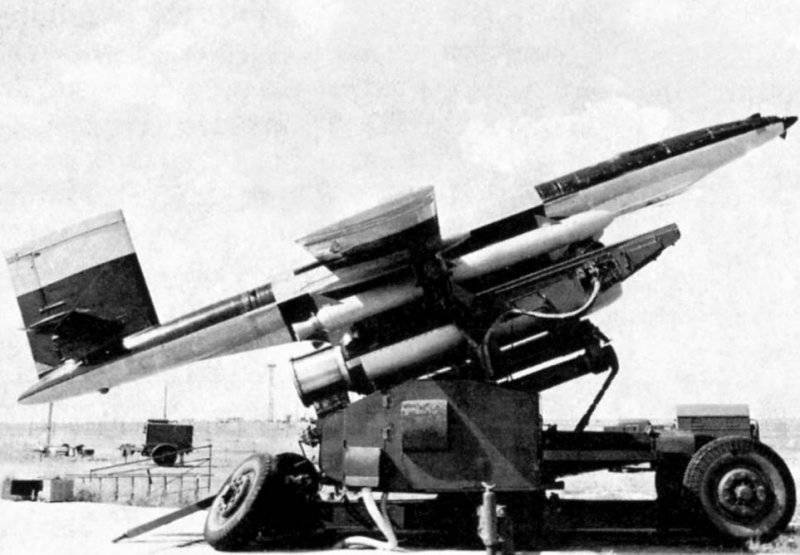
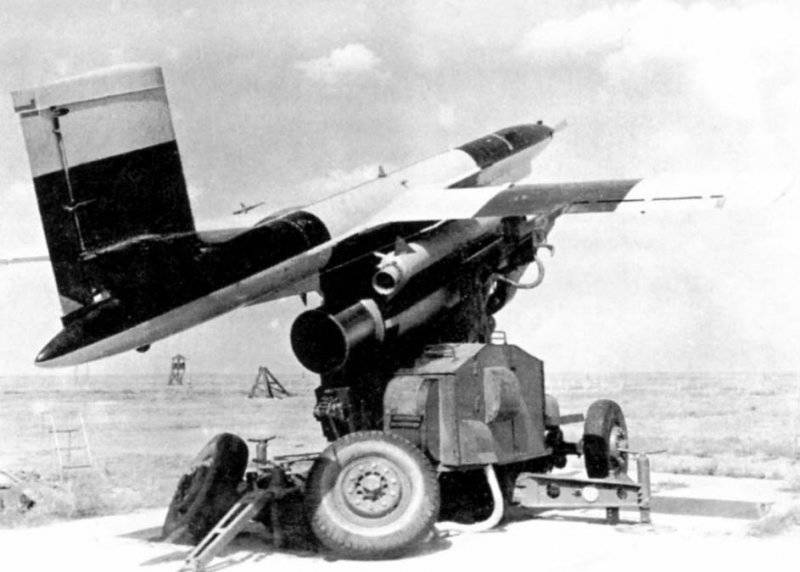
Information